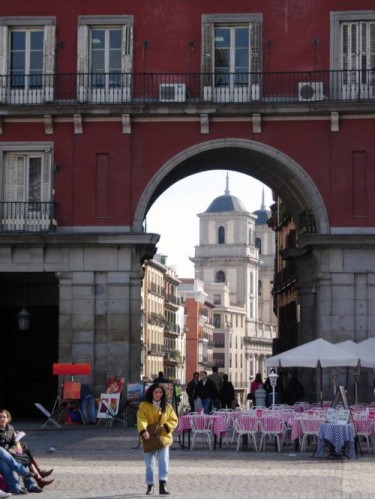September 15th marked the six-month anniversary of the Gluten-Free Guidebook. I want to thank everyone who has made it such a success so quickly. Many of you have taken the time to write to me. Some of you have passed along the names of local restaurants or tips about places you’ve visited; others have shared stories about their celiac diagnosis. I love hearing from readers, and I really appreciate any suggestions about travel, restaurants, hotels, and shops that can be shared with other readers.
Some people have written with specific questions about destinations they plan to visit. While I don’t have the time or resources to give recommendations, I wanted to share the process that I go through to research a destination. This happens to be a great time to do it, because I’m currently trying to settle on a place to visit this fall. Here are the steps I take:
- Round up the usual suspects. There are several sites that I always refer to before a trip. One is Celiac Handbook, which has listings for restaurants that serve gluten-free meals in countries from Cambodia to Iceland. If I’m traveling in North America, I’ll consult the Gluten-Free Restaurant Awareness Program, which has a lengthy list of celiac-friendly restaurants. I also visit Clan Thompson’s Celiac Site, which has information about different cruise lines, links to travel sites, and other travel resources.
- Locate the local celiac association. If you’re planning a European trip, check out the Association of European Coeliac Societies. In addition to providing useful information about gluten-free products, there are links to celiac organizations across the continent. (Note that in some countries, such as Belgium and Spain, there is more than one association.) If you’re traveling to South America, Israel, Turkey, South Africa, or Australia, you’ll find information about celiac associations on Clan Thompson’s Celiac Site. When I need an English translation of a site, I use Google or Babel Fish.
- Ask for more information. Once I locate a celiac association at my destination, I e-mail to ask for a list of recommended restaurants and shops (some organizations provide this information on their website). Don’t worry if you don’t speak the language; I’ve found that people are helpful, though it may take more than a week to get an answer.
- Line up your language cards. I’ve previously posted about how celiacs can communicate their needs in a foreign tongue. Some of the resources mentioned in that post have gotten even better: for example, Celiac Travel now has 42 translation cards (the latest additions include Flemish, Indonesian, and Korean). I print out several copies to carry with me when I travel.
- Work that search engine. It takes time to research the gluten-free possibilities at a particular destination. I type the name of a country plus gluten-free or celiac (also try coeliac); I repeat the process using the name of the region or the name of a city. Do this for Paris and, for example, you’ll find David Lebovitz’s Living the Sweet Life in Paris blog; try Italy, and you’ll find posts from the blog A Gluten-Free Guide.
The best thing that you can do is keep a positive attitude; wherever you choose to go, you will find a way to make it work. Before I went to Peru, I couldn’t find a single online resource in English or Spanish about traveling gluten-free in that country. When I went, I was armed with Spanish translation cards and was delighted to discover how easy it was for a celiac to dine out there. If anyone has a celiac-friendly travel resource that’s helped them plan a trip, I’d love to hear about it.







